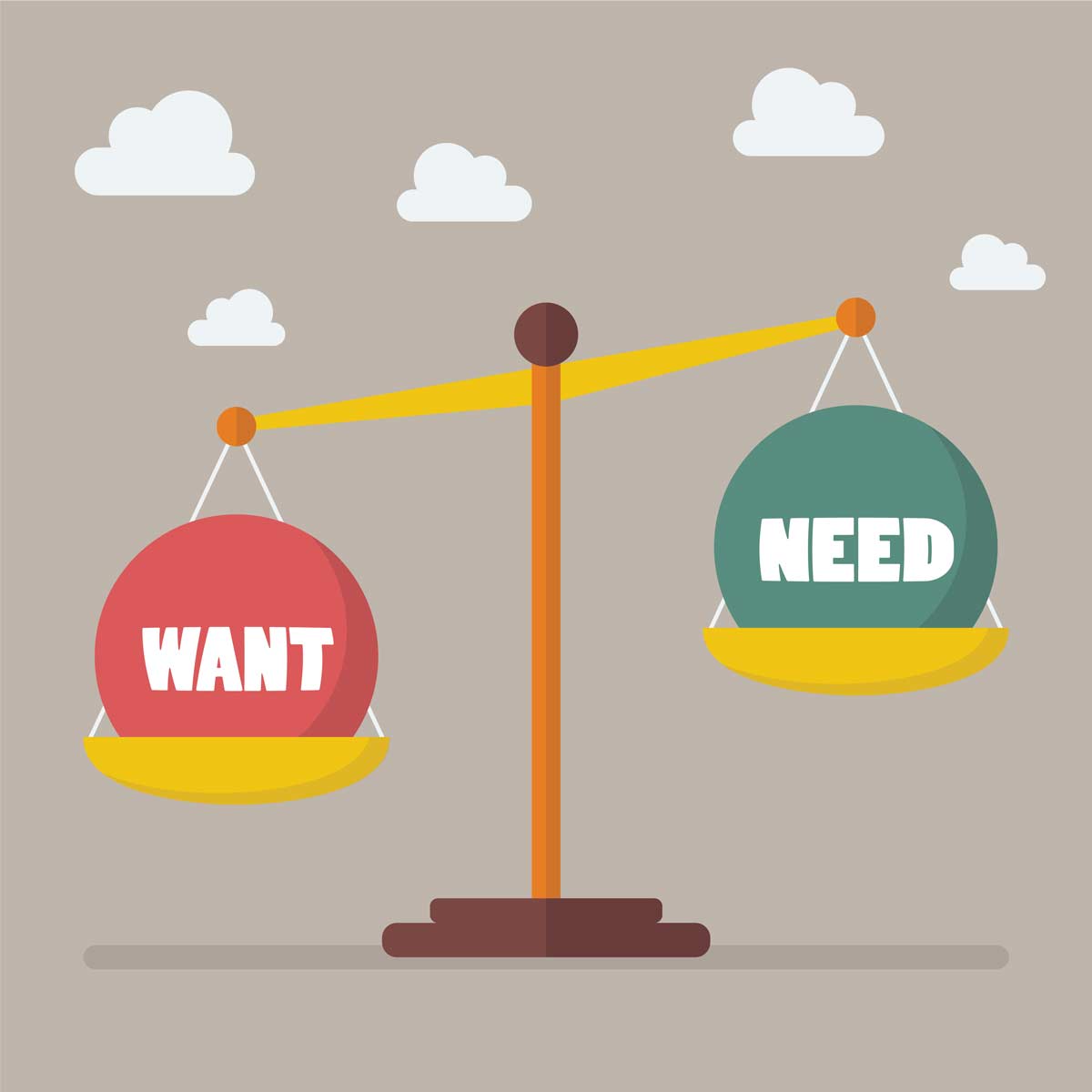One of the most important parts of setting up a monthly budget is separating needs from wants. Before assigning dollar amounts to any categories, it’s important to know which parts of your monthly expenditures are an absolute need, and which items would be nice to include, but are not a necessity. Many people find this particularly challenging, and many even give up on budgeting when they can’t move past this step.
Fortunately, it doesn’t have to be this way. Below, we’ve outlined how to tell the difference between wants and needs, as well as how to separate these two categories on a monthly budget plan.
Defining needs and wants
A need is something that is necessary to live and function.
A want is something that can improve your quality of life.
Using these criteria, a need includes food, clothing, shelter and medical care, while wants include everything else. However, as you’ll find when creating a budget, these terms are more fluid than they appear to be at first glance. While working through your lists, you may find that some items can fit into both categories, making the process confusing.
A good trick for dividing wants from needs is to let some time pass before fulfilling your desire for the item, either theoretically or practically. The desire to obtain a need only grows stronger as time passes, while the desire to fulfill a want will weaken with passing time.
Listing your needs and wants
Now that we’ve defined each of these budget categories, you can begin listing your own needs and wants.
Start with your needs, including the basics, like food, rent or mortgage, as well as other fixed expenditures that are necessary for you to live and function. Those things may include transportation costs, health insurance coverage and any clothing or tools you need for work.
It’s important to note that needs will vary from one person to another, and even for one person at different stages of life. For example, a family with two working parents who live in a community where there is no reliable public transportation may require two vehicles. Conversely, a family living in a city with several dependable transportation systems may list a second car as a want. Similarly, a four-bedroom home may be a need for a family while they’re raising several young children, but turn into a want later when the kids go off to college.
If you get stuck on a particular item and don’t know where to place it, hold it up to the following questions:
- Do I really need this item to live and function?
- Is it possible to fill this need in a less expensive way?
- How would my life be different if this item were not a part of it? When you’ve completed your list of needs, you can list all remaining expenses in your category of wants.
Reviewing and tweaking your lists
After completing this exercise, review your list of needs to see if anything can be removed. Will you still need these items a few years from now, or even a few months from now? Can any of your needs be swapped for a cheaper option? For example, you may need clothing, but do you need eight pairs of designer jeans?
Do the same for your list of wants. Which of them are only there because of pressure to keep up with others or look good? Which of your wants were more important to you in the past than they are today? Which are status symbols? Pare down your list until you’re only left with the wants that truly add value to your life.
Now that you know how to tell the difference between needs and wants, creating a monthly budget is simple. Assign dollar amounts to your fixed and non-fixed needs, set aside money for savings and use the rest to pay for your wants.
Going forward, you’ll likely also have an easier time keeping your impulse buys under control. Before purchasing an item, ask yourself if it’s a need or a want. If the item is a want, consider its importance and other wants you’ve recently bought before going ahead with the purchase.
Separating wants and needs can be one of the most challenging parts of creating a monthly budget. Follow the steps outlined above to learn how to make the distinction between these two spending categories with ease.
Once you've determined wants and needs, a savings account can help you stick to your budget. Learn more about our savings account options by clicking here.



